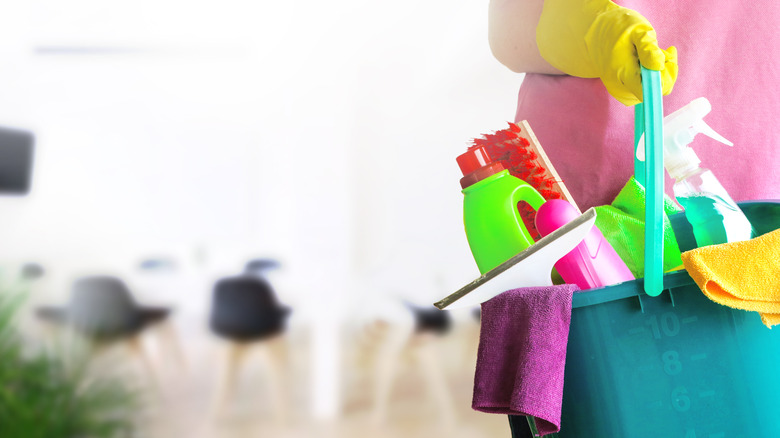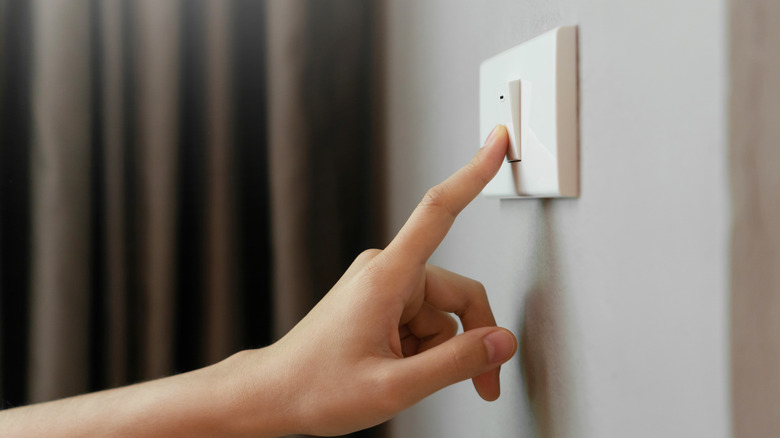The Very First Thing You Should Clean When You Move Into A New Home
Moving into a new home is an exciting time, but before the big day arrives, you need to give the property a good cleaning. The Professional Moving Specialists recommends cleaning your home the day before you move in your belongings so you don't have to worry about them getting in the way. You can clean it yourself, or you can hire a professional cleaning service to help. Vacancy cleaning services include dusting and washing the blinds; wiping down appliances, doors, and other surfaces; cleaning out drawers and cabinets; spot-cleaning the walls; and scrubbing the baseboards, according to Anita's Housekeeping.
Despite everything included in the service, there is still one place that needs cleaning the most, and if you weren't looking for it on the list, you probably wouldn't know it's missing (no, it's not the toilet). Before you touch anything else, this is the very first thing you should clean when moving into a new home.
The lightswitch
Believe it or not, the light switch is one of the dirtiest places in your home (even more so than your toilet), says Vanguard Cleaning System. It's one of the most-touched surfaces, which means there are a lot of germs hanging around on the light switches in your home. Because they stay warm due to the electrical current that runs through them, light switches are a breeding ground for bacteria. In fact, there is an average of 217 bacteria per square inch of a switch, Penn Medicine explains. If you aren't properly sanitizing your hands after each use, you're contributing more bacteria.
If you already clean your light switches, great! But are you cleaning them the correct way? To properly kill the bacteria lingering on the small surface, you need to use the right chemicals and the right procedure. HuffPost instructs to dampen a paper towel with a disinfectant or rubbing alcohol, then wipe down the entire light switch plate. Next, take a Q-tip to get into the nooks and crannies of the switch itself, then dry it off with a cloth or paper towel. Repeat this process at least once a week.

